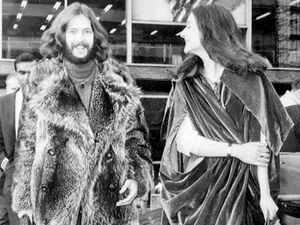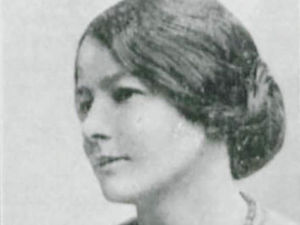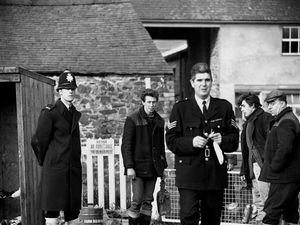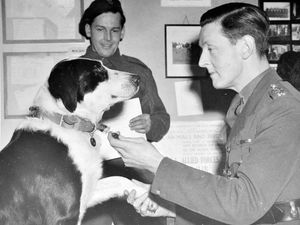Nurses, soldiers and 50ft flames: How heroes saved patients in Shropshire hospital blaze
Seventy years ago this month a Shropshire hospital went up in flames and a desperate race began to save the patients.

The drama and heroism of that night of January 27, 1948, was captured in a series of stunning images.
A large part of the Shropshire Orthopaedic Hospital at Gobowen was reduced to a charred and twisted wreck. But tragedy was averted.
Despite the rapidity of the blaze, nurses and civilian and military helpers got all of the patients to safety before the flames reached their wards.
Amid it all, a photographer on the spot captured the action and the aftermath.
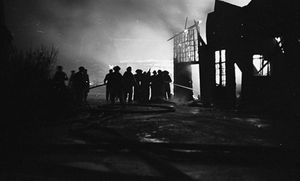
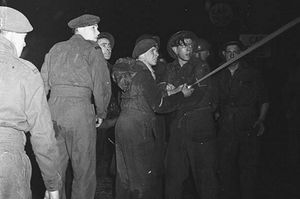
He was Geoff Charles, whose remarkable collection comprising tens of thousands of images is now held by the National Library of Wales, which describes his archive as one of its treasures.
Over 50 years Charles captured life and drama in North and Mid Wales and the borders area, and also took photos in Shropshire.
His photographs appeared in various newspapers, but he is best known for his work with the Welsh language national paper Y Cymro.
These pictures are used courtesy of the NLW, which has given permission for their use. They also appear on the Memories of Shropshire Facebook group.

The blaze saw staff push patients out into the road on their beds and then take them to Derwen College and a military camp nearby.
The hospital was to rise phoenix-like from the ashes to become today's centre of excellence as the Robert Jones and Agnes Hunt Hospital.
Charles took dozens of photos during and immediately after the fire, showing the efforts to fight the flames, patients being wheeled to safety, and children being cared for after being rescued.
He also photographed the damaged wards and the start of clearing up and rebuilding.
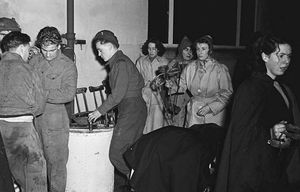
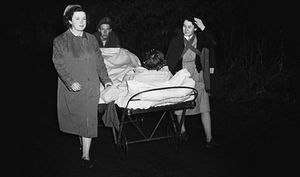
A selection of the pictures were used by the Border Counties Advertizer and also in a pamphlet used as part of an appeal seeking to raise £100,000 which was launched after the fire.
Here is how the contemporary Wellington Journal & Shrewsbury News reported the events: “Within a few hours on Tuesday night fire laid a large portion of Shropshire Orthopaedic Hospital near Oswestry in ruins.
“Nurses and helpers, by their promptness and speed, saved the whole of the 500 to 600 patients before the fire reached their wards. It was a rapid and devastating fire.
“While the flames lighting up the sky mounted to more than 50ft and falling woodwork marked the onward progress of the fire along the wards, the nurses and helpers pushed the beds, with their patients in them, into the roads and lined the beds up in pouring rain.
“Mackintoshes and waterproof sheets were placed over the beds as far as possible.
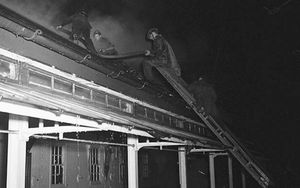
“Meanwhile officials were busy organising the reception of the patients at the Derwen Cripples Training College and the military camp at Park Hall, Oswestry, and as soon as that organisation was completed bands of soldiers and civilians aided nurses to push the beds, with their patients in them, about half a mile along the road in the darkness to the college and the camp, where they were accommodated for the night.
“Fortunately all the patients were saved unhurt.
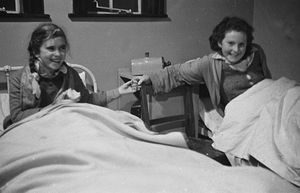
“The heroic work of the nurses and the hospital staffs was the admiration of all, and they toiled unceasingly until all patients were accommodated for the night in their temporary quarters. It was work well done in darkness and rain and all patients were under cover by ten o’clock.
“Oswestry, Shrewsbury and the military fire services were engaged in a big task in battling against a conflagration which lit up the sky for miles around.”
Charles was born at Brymbo in 1909 and was initially a reporter, including for the defunct Wrexham Star in the 1930s when one of his scoops was reporting on the Gresford Colliery disaster.
Becoming a competent photographer, he took over the management of the photographic section of Woodalls Newspapers.
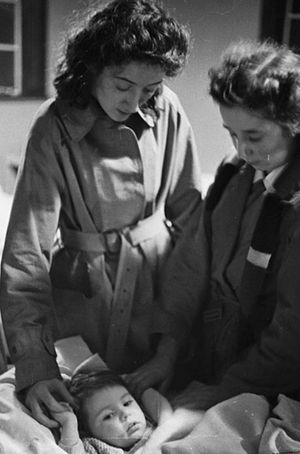
The NLW website says: "He shortly afterwards moved to Newtown to run the Montgomeryshire Express where he encountered a promising young reporter called John Roberts Williams for whom he was to illustrate stories for Y Cymro."
Occasional work for Y Cymro started in 1937 and resumed in earnest after the war when Williams was appointed editor.
"Their work soon surpassed any other photojournalism hitherto seen in Wales. Geoff Charles is also quick to cite Picture Post as an influence at this time."

According to NLW: "Geoff Charles' contribution to Welsh photography is unique. His approach is characterised by both an innate talent and an empathy for his subjects.
"He worked as a photojournalist in Wales from the 1930s to the 1970s and was the photographer of record in Welsh-speaking Wales for most of that period."
Charles retired in 1975 but continued to contribute articles and photographs to Y Cymro and Farmers Weekly on a freelance basis.
He donated his collection of 120,000 negatives to the National Library of Wales.

"All have been contact printed and cross-referenced to the publications in which they appeared. The collection has proved an invaluable resource for authors, historians, students and the general public."
Unfortunately during the late 1990s it was discovered some of the negatives were starting to degrade, and there is a continuing project to conserve them.
Charles died in March 2002.
As for the hospital, it had been set up at the former Park Hall military hospital in 1921. It was an open air hospital - fresh air was considered beneficial - and patients would be wheeled down the surrounding lanes in their bed and into Oswestry to do their shopping.
The fire in January 1948 heralded in an unhappy year on several counts. Dame Agnes Hunt, "Shropshire's Florence Nightingale" who had co-founded the hospital, died on July 24.
Then, in the autumn, there was a typhoid epidemic. Seven died and over 100 were infected in the outbreak, which began in September 1948 and ended on October 23. The cause was not discovered for certain, but contaminated milk was suspected.

